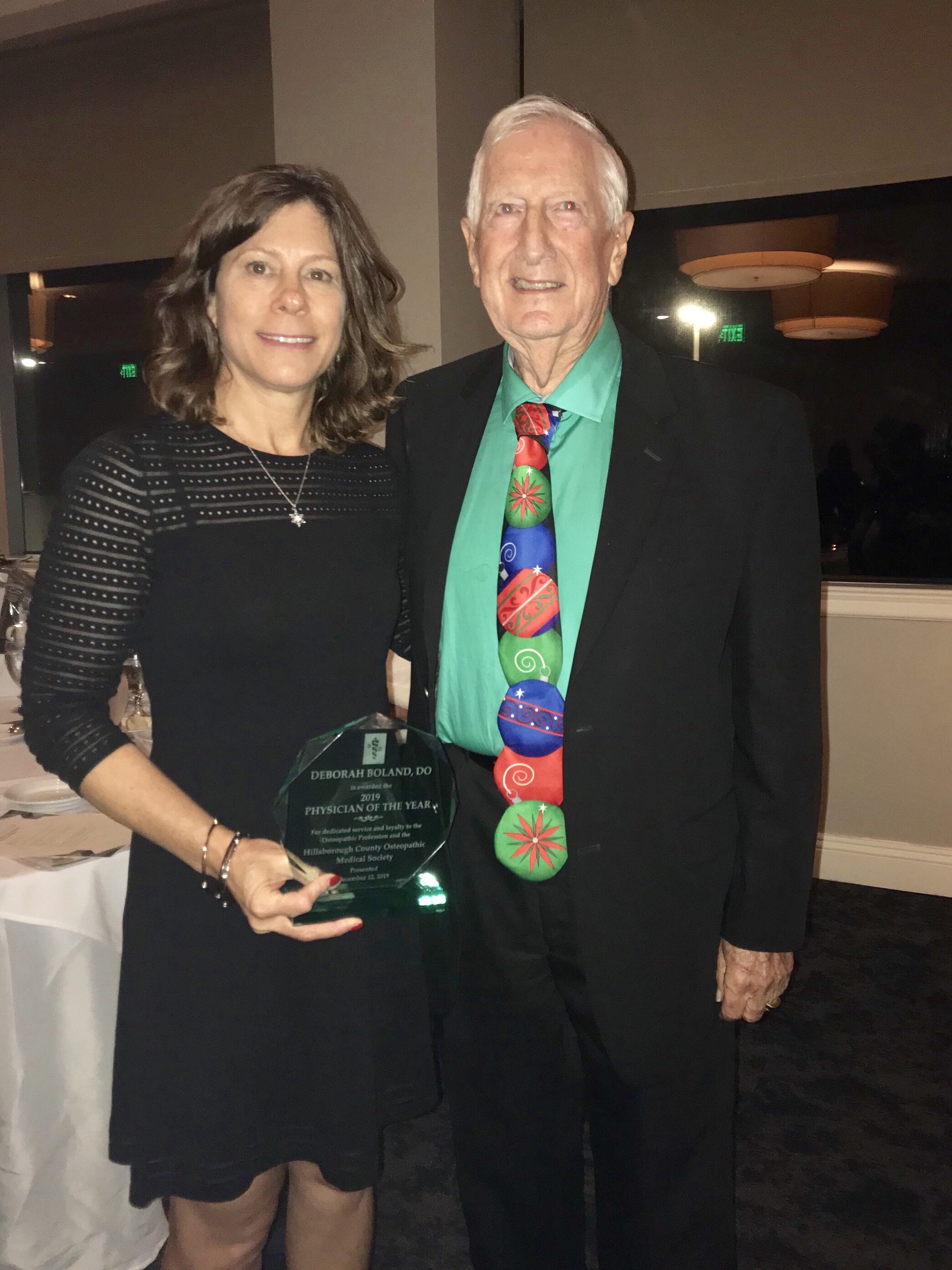
FOR IMMEDIATE RELEASE:
Neurologist Deborah Boland, D.O., MSPT, Named “Physician of the Year”
TAMPA, FL (December 17, 2019) – The Hillsborough County Osteopathic Medical Society (HCOMS) has named Dr. Deborah Boland, D.O., MSPT, Neurologist, Diplomate of the American Board of Psychiatry and Neurology, and owner of Be Mobile Neurology, as their "Physician of the Year" for 2019. This prestigious award is presented to a Doctor of Osteopathic Medicine (D.O.) who has made significant contributions to both the osteopathic profession and the local community. Dr. Boland is one of only a handful of Movement Disorder specialists in the Tampa Bay area and is a pioneer in the mobile delivery of neurological services.
Dr. Boland said, “I am so honored and humbled to be recognized by my colleagues and friends with this award. Healthcare is rapidly changing, and I’m proud to be leading the movement back to patient-centered, individualized care. Through my practice, Be Mobile Neurology, I am working to offer a more personalized and affordable approach to healthcare, improving outcomes for my patients.”
Over the course of her medical career, Dr. Boland witnessed the limitations and stress that traditional physician office visits placed on both patients with neurological issues and their caregivers. Through in-home visits and telemedicine, Be Mobile Neurology presents a solution, offering patients a membership model for healthcare services that allows them to receive focused attention in a comfortable setting. Be Mobile Neurology is the only mobile neurology practice in Tampa Bay and is leading trends nationally.
Dr. Boland started in healthcare as a Physical Therapist, receiving her master’s degree in Physical Therapy from Andrews University in Berrien Springs, Michigan, and practicing for 10 years before going to medical school. Dr. Boland earned her medical degree from Des Moines University College of Osteopathic Medicine, which has a rich osteopathic history and is one of the oldest osteopathic medical schools in the country.
Following medical school, she completed her internship and neurology residency at the University of Illinois College of Medicine/OSF Saint Francis Medical Center. Dr. Boland went on to complete fellowship training specializing in Movement Disorders at Duke University, and she served as an Assistant Professor of the Movement Disorders Center at Georgia Regents University’s Department of Neurology.
Since January 2018, Dr. Boland has served as a Governor on the Hillsborough County Osteopathic Medical Society Board. She also is a member of the International Parkinson and Movement Disorder Society, the American Academy of Neurology, the American Osteopathic Association, and Working Women of Tampa Bay.
If you’re interested in learning more about Dr. Boland or her ground-breaking neurological practice, please call (813) 981-4403 or visit www.bemobileneurology.com.
ABOUT BE MOBILE NEUROLOGY:
Founded by Dr. Deborah Boland in 2017, Be Mobile Neurology is Tampa Bay’s only mobile neurology private practice, blending cutting-edge care with a touch of old-fashioned medicine. As an innovative response to traditional medicine, Be Mobile Neurology offers individualized care in the comfort of the patient’s residence with unparalleled access to the neurologist. Learn more at www.bemobileneurology.com.
ABOUT HILLSBOROUGH COUNTY OSTEOPATHIC MEDICAL SOCIETY:
The Hillsborough County Osteopathic Medical Society (HCOMS) is a nonprofit organization serving the Osteopathic medical profession and associates within this geographic area. HCOMS is affiliated with the American Osteopathic Association and the Florida Osteopathic Medical Association. Learn more at www.hcoms.org/home.html.
###
Editorial Note: A photo of Dr. Deborah Boland, D.O., MSPT, of Be Mobile Neurology with Dr. Ken Webster, Ed.D., Executive Director of HCOMS, is attached.
Media Inquiries:
Tanya Cielo
Sky Strategic Marketing
tanya@skystrategicmarketing.com
1906 N. Armenia Ave. | Suite 315
Tampa, FL 33607
(o) 813.337.0893